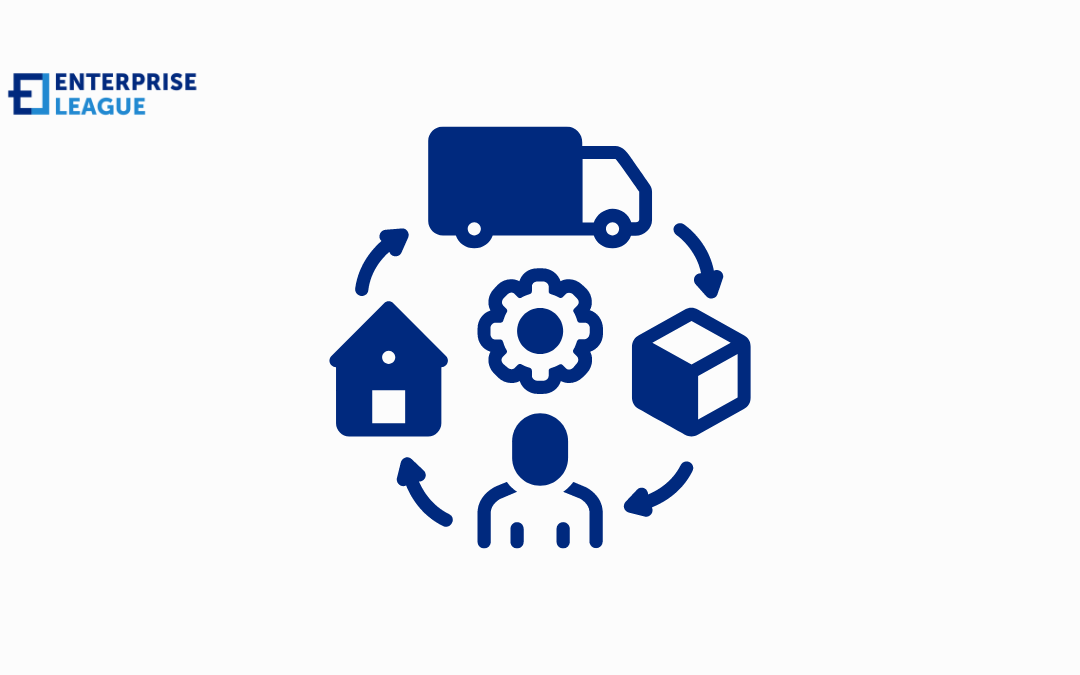In this article we will discuss what you can expect from a top-notch private equity advisor and why you’ll find what you need at a private equity advisor.

How data-driven decisions can enhance fintech software ROI and performance?
How data-driven decisions can enhance fintech software ROI and performance?
April 04, 2024

One of the most potent tools in achieving return on investment (ROI) and enhancing performance in fintech, is data-driven decision-making. By harnessing the insights gleaned from data analytics, fintech companies can unlock new avenues for growth, innovation, and customer satisfaction. In this article, we will explore how data-driven decisions can elevate the Fintech Software ROI and performance of Fintech software, revolutionizing the industry landscape.
Understanding the power of data in fintech
According to a report by McKinsey, data-driven organizations are 23 times more likely to acquire customers, six times as likely to retain customers, and 19 times more likely to be profitable than their counterparts. These staggering statistics underscore the transformative potential of data-driven decision-making in the fintech sector.
Moreover, the rise of artificial intelligence (AI) and machine learning (ML) technologies has further accelerated the pace of data-driven innovation in fintech. These technologies enable companies to analyze vast amounts of data in real-time, uncovering patterns, predicting trends, and optimizing decision-making processes with unprecedented accuracy and efficiency.
Top 10 tips to enhance fintech software ROI and performance
In the dynamic world of financial technology (fintech), the quest to maximize return on investment (ROI) and performance is paramount. Fintech companies are constantly seeking ways to optimize their software solutions to stay competitive and meet the evolving needs of customers. In this article, we present the top 10 tips to enhance fintech software ROI and performance, providing actionable insights for companies looking to thrive in the ever-changing fintech landscape.
Exploring market trends and opportunities
By thoroughly exploring market trends and opportunities, fintech companies can position themselves strategically, capitalize on emerging trends, and stay ahead of the competition.
Market research plays a pivotal role in this process, allowing fintech software development services to gather data and insights into consumer behavior, industry dynamics, and regulatory changes. By analyzing market data, such as customer preferences, competitive landscapes, and macroeconomic trends, fintech companies can identify untapped market segments and areas for innovation.
For instance, according to a report by Statista, the global digital payment market is projected to reach $10.07 trillion by 2026, driven by the increasing adoption of digital wallets, mobile payments, and contactless payment methods. Fintech companies can capitalize on this trend by developing innovative payment solutions tailored to meet the evolving needs of consumers and businesses.
Segmenting and targeting your audience
Audience segmentation involves dividing your target market into distinct groups based on demographics, behaviors, preferences, and other relevant factors. By segmenting your audience, you can create more personalized marketing campaigns and deliver targeted messaging that resonates with specific segments.
Crafting personalized content for maximum impact
Personalized content goes beyond simply addressing the recipient by name; it involves creating content that speaks directly to the unique needs, interests, and pain points of each individual. This could include customized product recommendations, targeted offers, or relevant educational content.
Lead scoring and qualification: prioritizing your prospects
Lead scoring involves assigning a numerical value to each lead based on various factors such as demographics, behavior, and engagement level. This allows companies to prioritize leads based on their likelihood to convert, ensuring that sales and marketing efforts are focused on prospects with the highest potential value.
Analyzing user behavior for effective lead nurturing
Understanding user behavior is key to effective lead nurturing in the fintech industry. By analyzing how users interact with your website, emails, and other digital touchpoints, fintech companies can tailor their lead nurturing efforts to meet the needs and preferences of their audience.
One way to analyze user behavior is through website analytics tools, which provide insights into how users navigate your site, what content they engage with, and where they drop off in the conversion process. By tracking key metrics such as bounce rate, time on page, and conversion rate, companies can identify areas for improvement and optimize their website for better lead generation and conversion.
Optimizing content engagement for continued interest
Content engagement optimization involves creating and delivering content that resonates with your target audience and encourages them to take action. Software development project management could include blog posts, whitepapers, case studies, videos, infographics, and other types of content that provide value and address the needs and pain points of your audience.
Building trust through transparency and education
One effective way to build trust is through transparency and education. Transparency involves being open and honest with customers about your products, services, and business practices. This includes communicating your fees, terms, and conditions, as well as being upfront about any potential risks or limitations associated with your products or services. Moreover, building trust through transparency and education can have tangible benefits for your bottom line. According to a study by Edelman, 81% of customers say that trust is a deciding factor in their purchasing decisions, and 73% say they would recommend a brand they trust to others.
Delivering personalized offers and recommendations
One way to deliver personalized offers is through targeted marketing campaigns. By segmenting your audience based on factors such as demographics, behavior, and preferences, you can create targeted campaigns that speak directly to the interests and needs of specific segments. For example, if you offer a range of financial software development, you could create separate campaigns for different customer segments, such as millennials, small business owners, or retirees, each tailored to their specific needs and interests. For example, if a customer frequently uses your mobile banking app to check their account balance, you could send them personalized notifications about new features or promotions related to mobile banking.
Leveraging predictive analytics for upselling and cross-selling
Predictive analytics is a valuable tool for fintech companies looking to maximize revenue and enhance ROI. By analyzing historical data and customer behavior, predictive analytics can help companies identify opportunities for upselling and cross-selling, driving additional revenue and increasing customer lifetime value.
Upselling involves persuading customers to upgrade to a higher-priced product or service, while cross-selling involves offering complementary products or services to existing customers. Predictive analytics can help fintech companies identify which customers are most likely to respond positively to upsell or cross-sell offers, enabling them to target their efforts more effectively.
Measuring customer satisfaction and feedback
Measuring customer satisfaction and gathering feedback is essential for fintech companies to understand how well their products and services are meeting the needs and expectations of their customers.
One way to measure customer satisfaction is through Net Promoter Score (NPS) surveys, which ask customers how likely they are to recommend your fintech software development company to others on a scale of 0 to 10. By tracking NPS scores over time, fintech companies can gauge overall customer satisfaction and identify areas for improvement.
Conclusion
By leveraging data-driven insights, advanced analytics, and emerging technologies, fintech companies can gain a competitive edge in a rapidly evolving industry landscape.
Furthermore, by prioritizing transparency, education, and personalized experiences, fintech companies can build trust with their customers and foster long-term loyalty and advocacy. Ultimately, the key to success lies in understanding customer needs, delivering value at every touchpoint, and continuously innovating to stay ahead of the curve.
More must-read stories from Enterprise League:
- Inspiring quotes about supporting small businesses.
- Foretelling: transform your business by predicting future trends.
- Best marketing tools for startups that are worth trying.
- Find out how to turn your hobby into a business.
- Entrepreneurs over 70 that have defiled old age.
Related Articles
Top traits of a successful private equity advisor: Skills and expertise
The hidden business skills you pick up while traveling
From problem-solving to networking, let’s see which hidden business skills you pick up while traveling that can be a valuable asset to the business world.
Preparation is key: 6 things to do when bringing on a new employee
Ensuring a smooth start for new team members is crucial, so that’s why in this article we’ll discuss about what you should do when bringing on a new employee.
10 proven ways how SEO helps your business attract more clients
The right question isn’t “if” SEO helps your business, but rather how SEO helps your business. Find out all about it here.
Audience data: The best way to build relationships with your customers
Stop guessing what your customers want, but discover how audience data helps you understand your market better and build lasting customer relationships.















